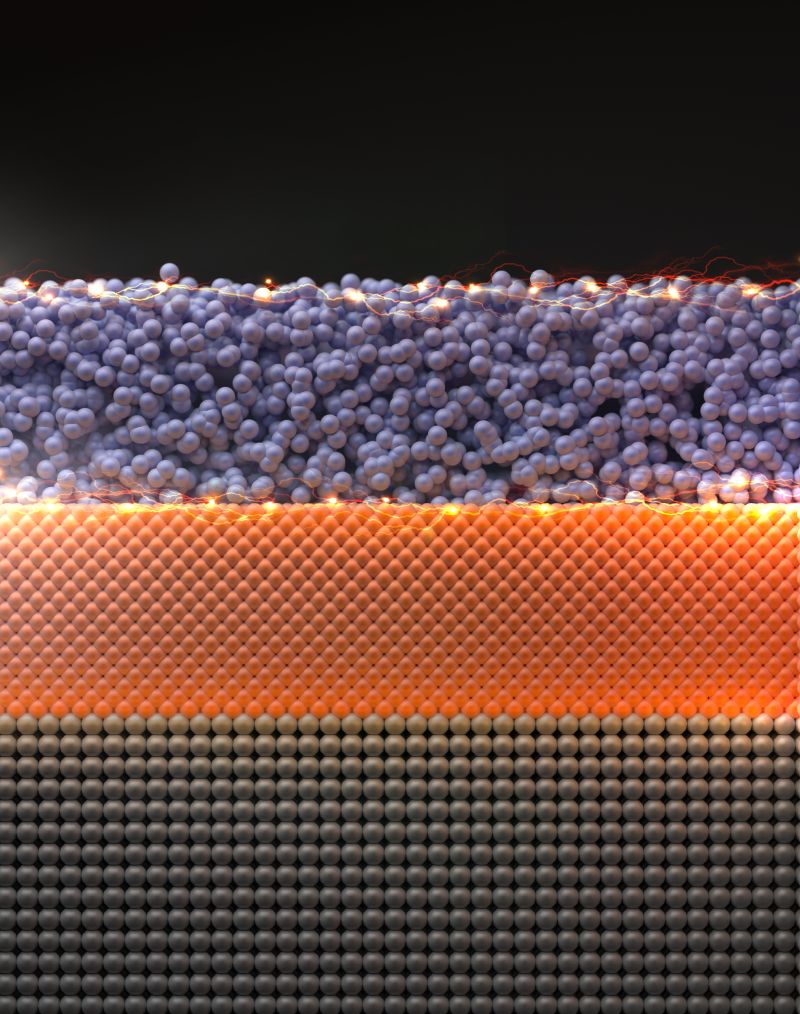
Ultrathin conductor developed for nanoelectronics could be better than copper
With multiple grants and research infrastructure provided by the U.S. National Science Foundation, researchers have shown that a newly developed material, niobium phosphide, can conduct electricity better than copper in films that are only a few atoms thick. These films can also be created and deposited at sufficiently low temperatures for compatibility with modern computer chip fabrication — and may help make future electronics more powerful and energy efficient.
So far, the best conductor candidates to outperform copper in nanoelectronics have had only exact crystalline structures, meaning they require very high temperatures to be formed. These new niobium phosphide films are the first examples of noncrystalline materials that become better conductors as they get thinner. The research is led by Standford University and results were published in Science.
"We are breaking a fundamental bottleneck of traditional materials like copper," says Asir Intisar Khan, a postdoctoral researcher at Stanford University and an author on the research paper. "Our niobium phosphide conductors show that it's possible to send faster, more efficient signals through ultrathin wires. This could improve the energy efficiency of future chips, and even small gains add up when many chips are used, such as in the massive data centers that store and process information today."

Credit: Il-Kwon Oh / Asir Khan
Niobium phosphide is what researchers call a topological semimetal. This means that the material can conduct electricity, but its outer surfaces are more conductive than its inner material. The thinner a niobium phosphide film is made, the smaller its inner material gets — but its surfaces stay the same. This allows its more conductive outer surfaces to contribute more to electrical currents and make for better conductive material.
By comparison, traditional conductive metals like copper become worse at conducting electricity when thinner than about 50 nanometers.
"Really high-density electronics need very thin metal connections, and if those metals are not conducting well, they are losing a lot of power and energy," says Eric Pop, another member of the Stanford research team that produced the material. "Better materials could help us spend less energy in small wires and more energy actually doing computation."
Niobium phosphide films are a new frontier for conductors in nanoelectronics. However, the researchers don't anticipate that they will suddenly replace copper in all computer chips — copper continues to be a superior conductor in thicker films and wires. Niobium phosphide could nonetheless be used for the very thinnest connections and opens doors to researching other topological semimetals as conductors that could take niobium phosphide's performance even further.
"It has been thought that if we want to leverage these topological surfaces, we need nice single-crystalline films that are really hard to deposit," says doctoral student and paper co-author Akash Ramdas. “Now we have another class of materials — these topological semimetals — that could potentially act as a way to reduce energy usage in electronics."
Distribution channels: Science
Legal Disclaimer:
EIN Presswire provides this news content "as is" without warranty of any kind. We do not accept any responsibility or liability for the accuracy, content, images, videos, licenses, completeness, legality, or reliability of the information contained in this article. If you have any complaints or copyright issues related to this article, kindly contact the author above.
Submit your press release